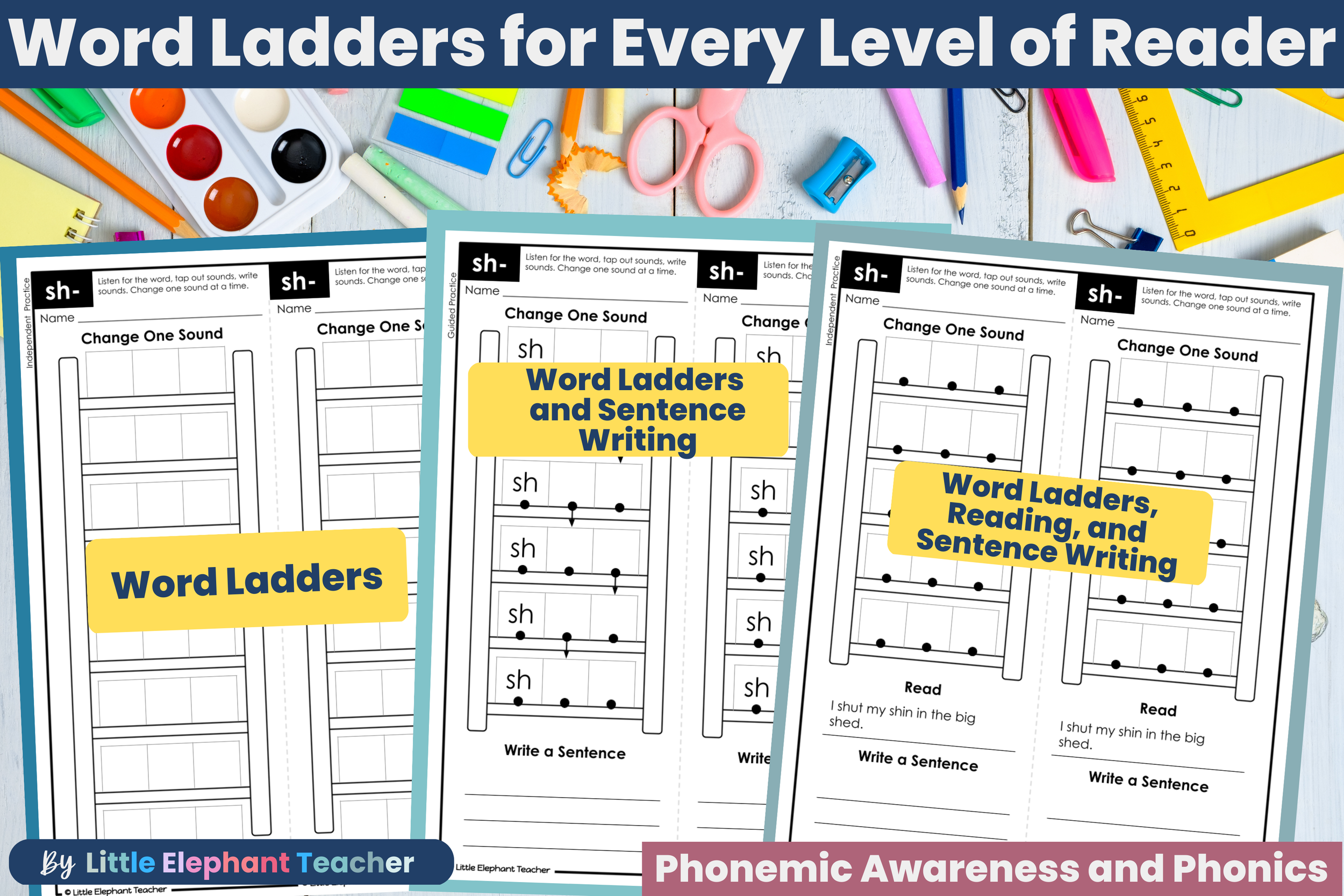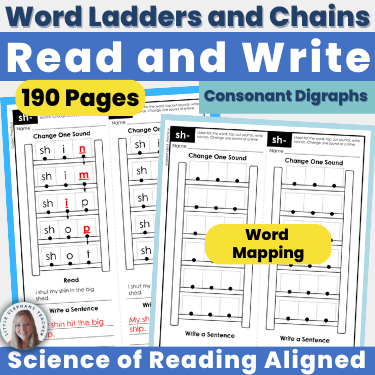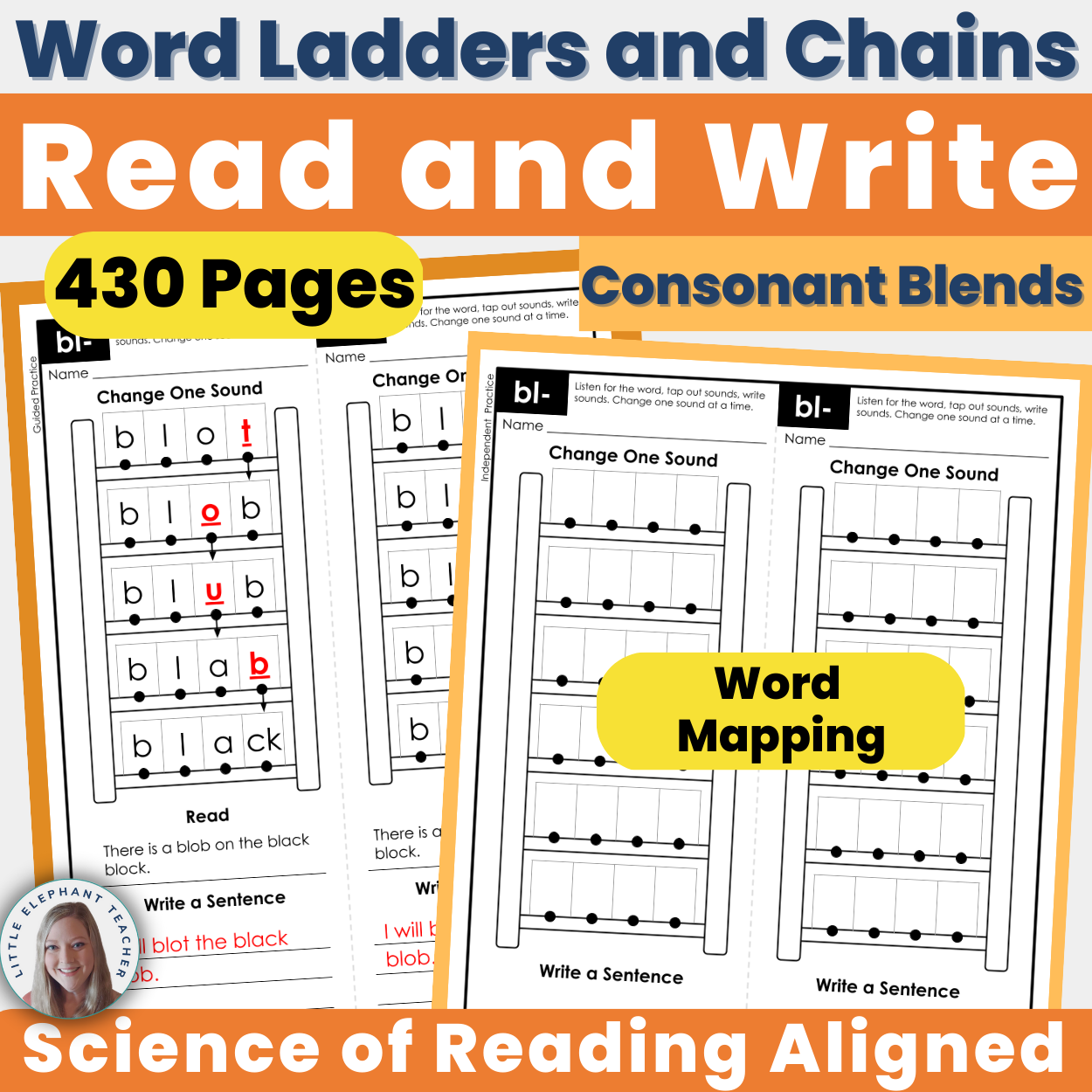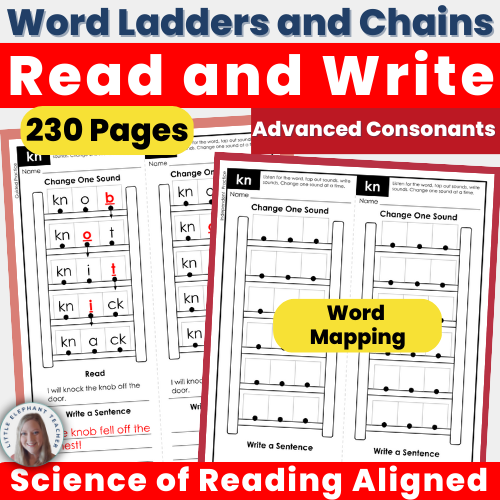Phonemic Awareness and Phonics Using 3 Engaging Word Ladder Activities
Are you looking for an engaging way to teach your students phonemic awareness and phonics skills together? Word Ladder Activities are the perfect solution! In this blog post, I will share 3 Word Ladder Activities that quickly became a favorite in my classroom. These educational tools are fun and interactive while allowing your students to work on developing foundational literacy skills. Whether you're a classroom teacher or a homeschooling parent, word ladders can be used in many academic settings. Plus, they offer the added benefit of being adaptable to different levels of support! Don’t forget to grab a free sample of these Word Ladder Activities below. You won’t be disappointed to try these phonemic awareness and phonics exercises with your struggling readers.
Defining Phonemic Awareness
Phonemic awareness is the ability to hear, identify, and manipulate individual sounds (phonemes) in spoken words. It helps children understand that words are made up of individual sounds and that these sounds can be combined to form new words. Phonemic awareness is a precursor to phonics instruction and a crucial skill for learning to read and write.
What is Phonics?
Phonics is a method of teaching reading and writing that focuses on the relationship between sounds and letters. It involves the systematic teaching of letter-sound relationships and enables children to decode words by sounding them out. Phonics instruction is most effective when combined with phonemic awareness instruction.
The Significance of Phonemic Awareness and Phonics
Phonemic awareness and phonics are critical components of early literacy development that are essential for building a strong foundation in reading and writing skills.
Together, phonemic awareness and phonics provide children tools they need to become proficient readers and writers. By teaching children to recognize and manipulate individual sounds in spoken and written words, they can develop the skills necessary for reading fluency and comprehension.
It is important to note that phonemic awareness and phonics instruction should be tailored to meet the needs of individual learners. Some children may require more explicit instruction, while others may benefit from a more hands-on, experiential approach.
Lastly, it is worth emphasizing that phonemic awareness and phonics should not be viewed as separate, isolated skills. Instead, they are interconnected and should be taught together as part of a comprehensive literacy program that also includes fluency and vocabulary development, comprehension strategies, and writing instruction. If you want more information on an intervention that consists of all of the components, read my blog post 13 Powerful Lessons for Phonics that You Need to Know
Developing these skills can help improve reading fluency, spelling, and overall literacy.
An Introduction to Phonics Word Ladders
Phonics word ladders are an educational tool that helps students learn to read and spell by using a series of words that differ by one letter at a time. This helps them to recognize patterns in words and improve their phonics skills. Phonics word ladders can be incorporated into a variety of activities, such as literacy centers, small group instruction, or independent practice.
Here are a few tips I have when choosing Word Ladders for your instruction.
Familiarize yourself with the ladder format: Phonics Word Ladders consist of a series of words arranged in a ladder-like pattern. Each step of the ladder represents a change in one letter of the previous word, creating a new word.
Start with simple ladders: Choose word ladders that are appropriate for your child's reading and spelling level. It's best to start with simple ladders that have only a few steps.
Encourage sounding out: As your child works through the ladder, encourage them to sound out each word, paying attention to the changes in letter sounds.
Use visual aids: To help your child visualize the ladder, draw it out on a piece of paper or use a whiteboard. You can also use colorful magnets or stickers to make the ladder more engaging.
Make it a game: Turn the ladder into a game by setting a timer and seeing how quickly your child can complete it. You can also challenge them to come up with their own word ladders.
I incorporate word ladders in every phonics intervention to help reinforce letter-sound relationships. These phonics-focused word ladders are used as warm-ups with all of my reading groups that, consist of students of all ages and abilities. My students have found these engaging and interactive.
By using Phonics Word Ladders regularly, I have seen my struggling readers develop stronger reading and spelling skills!
The Connection Between Phonemic Awareness and Phonics Word Ladder Activities
Phonics Word ladders are an effective tool for teaching phonemic awareness. Word ladder activities allow students to identify, manipulate, and play with individual sounds in words.
Phonics Word ladders help struggling readers recognize and differentiate between similar-sounding words, which is a crucial aspect of phonemic awareness. By manipulating the letters and sounds in the ladder, your reader can practice blending and segmenting sounds in words, foundational reading and writing skills.
Overall, Phonics Word ladders are a fun and interactive way to teach phonemic awareness and support early literacy development.
3 Engaging Word Ladder Activities That are Planned for You?
Exclusive Focus on Word Ladders
2. Combining Word Ladders and Writing
3. Word Ladders plus Reading and Writing
You can find these Differentiated Word Ladder Activities at my TPT Store. See how these engaging word ladders work for EVERY student. Grab a Sample of these word ladders below!
I hope you enjoyed learning about word ladder activities. Sharing with you a creative and engaging way to help students develop their phonemic awareness and phonics skills has been an absolute pleasure. Remember that by manipulating individual sounds and letters with these word ladders, your students will see and hear the relationships between sounds and words. They will gain a better understanding of reading new words. These activities can be easily adapted to suit different ages and abilities, making them a valuable tool for any classroom. Now that you’ve had the opportunity to learn about these educational activities, you are ready to put them into practice. Word ladder activities can make a real difference in your student’s phonemic awareness and phonics skills.
Please reach out if you have any questions. I’m here to help!

















